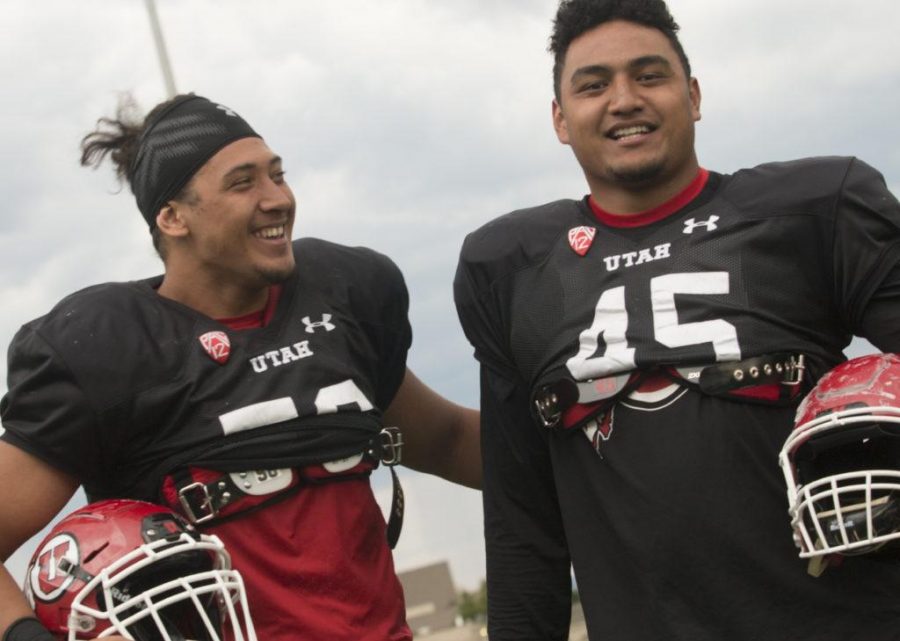It’s often said that a picture is worth a thousand words, and when University of Utah defensive end Bradlee Anae stumbled across an image from the ‘80’s, that phrase couldn’t have described the history of the picture any better.
The photograph was of Anae’s uncle Robert, a former BYU center and offensive guard from 1981-84, blocking current Utah defensive tackle Filipo Mokofisi’s dad, Filipo Mokofisi Sr., who was a linebacker for Utah from 1982-85.
“I asked him about it,” Anae said. “I was like, ‘Is that your dad or your grandpa?’ He goes, ‘Oh, that’s my dad.’” And I was like ‘Oh, small world.’”
The rivalry between Utah and the team down south dates back to 1896. It’s not necessarily the longevity of the rivalry that makes the matchup competitive, it’s the history that is intertwined — it’s the coaches who once played or coached for their now rival and the athletes who play for the team their family member(s) either represented or wanted to beat.
Anae’s father was a BYU defensive end, Mokofisi had several family members who were Utes, Utah head coach Kyle Whittingham played and coached for BYU, former BYU head coach LaVell Edwards earned a master’s degree at Utah and current BYU head coach Kalani Sitake coached at Utah, but he spent his college career in a Cougar uniform.
The list goes on.
“I guess it’s just natural for a coach to fluctuate through BYU and Utah being in the same state,” Anae said. “I mean, coaches hire familiar coaches who are good at what they do. I think it just goes around like that. No matter where you end up, you’re fully bought into whatever that program has and the whole aura and atmosphere that goes around that program.”
Mokofisi grew up in Utah, and ever since he was a kid, he understood what the rivalry was and what it meant to the state. Being able to now take the field as a Ute, he said the outlook he has on the rivalry hasn’t changed — the tension is still as strong as it was when he was little.
While some Utes might seek advice from their family members who once took part in the rivalry, it’s not always a guarantee past players will be open to talking about what the games were like back then.
“[My dad] lost all his years here,” Mokofisi said. “So there’s nothing really much to talk about. He can’t say nothing.”
From Mokofisi Sr.’s first year plus two years after he left, Edwards had taken control of BYU and it racked up a six-game winning streak. While that might not get brought up often at the dinner table at the Mokofisi household, one thing that is hard not to avoid is the fact that Mokofisi gets to walk in his dad’s footsteps and sport the “U” on his uniforms — it’s something he takes pride in.
Whether a Ute is following the path that another family member paved in the program or if he’s laying down his own stepping stones to follow, the Holy War still remains something that divides families, but at the same time brings them together.
Anae has the responsibility of getting 13 tickets ready for his family that will fly in from Hawaii just for the rivalry game in Provo this season. He said it’s the most exciting game of the year for him to play because of the feeling the rivalry projects.
Whether it’s red or blue blood that is bled, it’s undeniable history in the making. It’s “good vs. evil,” “red vs. blue” and it’s a dated photograph with memories infused that speaks louder than words.
“It’s two big entities in one land,” Anae said. “You got to see who’s the dominant one.”
b.colindres@dailyutahchronicle.com
@Britt_Colindres
Click here for more rivalry stories.


